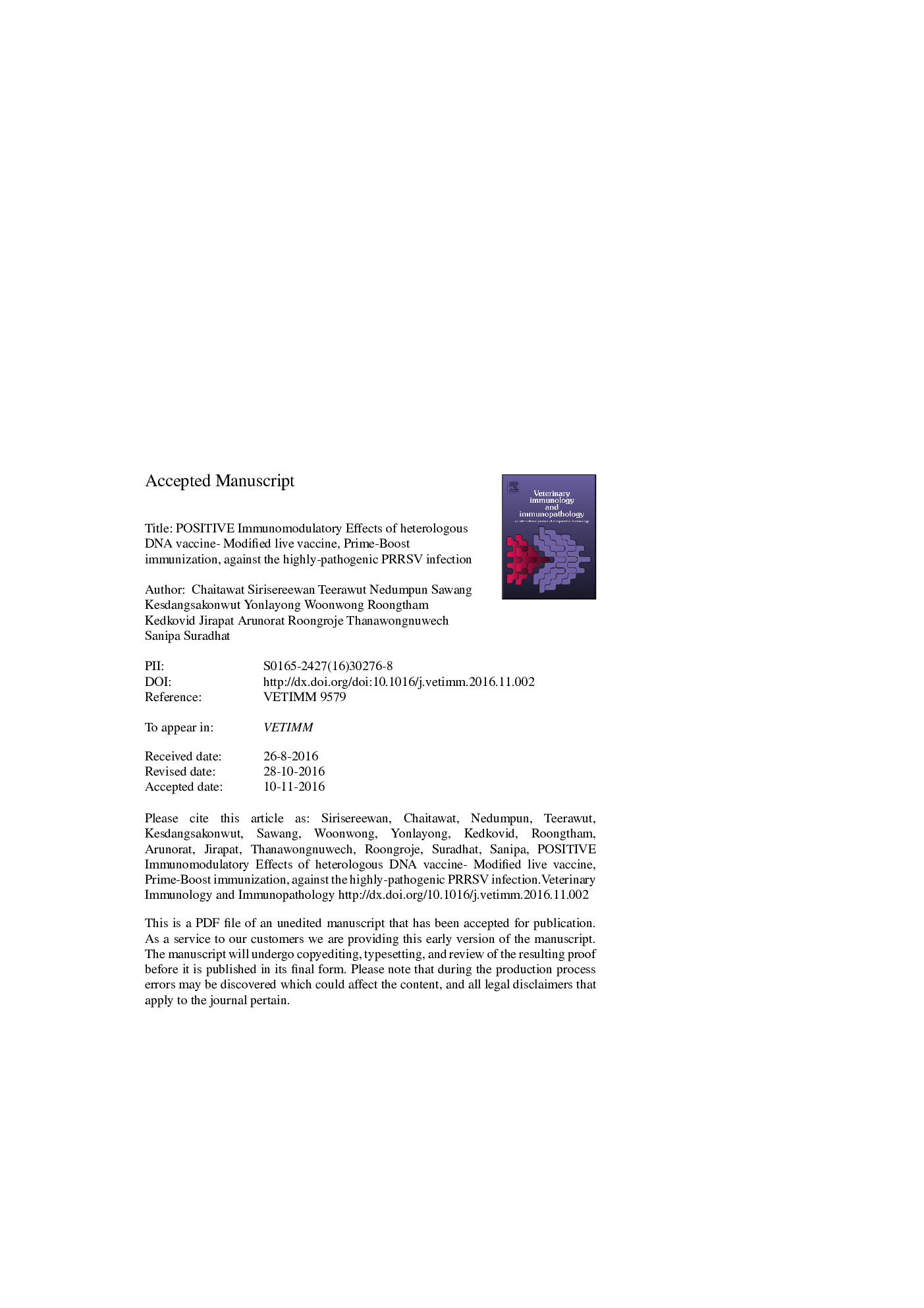| Article ID | Journal | Published Year | Pages | File Type |
|---|---|---|---|---|
| 5544814 | Veterinary Immunology and Immunopathology | 2017 | 23 Pages |
Abstract
Porcine reproductive and respiratory syndrome virus (PRRSV) infection is one of the most important swine pathogens, and causes a major economic impact worldwide. Recently, a new variant type 2 PRRSV, highly pathogenic PRRSV (HP-PRRSV) has emerged and continued to circulate in Southeast Asia region. Currently, commercially available PRRSV vaccines, modified live PRRS vaccines (MLV) are not able to provide complete protection against HP-PRRSV and been reported to induce negative immunomodulatory effects. Interestingly, a novel DNA vaccine was developed and successfully used to improve PRRSV-specific immune responses following MLV vaccination. To investigate the efficacy of a heterologous DNA-MLV prime-boost immunization against the HP-PRRSV infection, an experimental vaccinated-challenged study was conducted. Two-week-old, PRRSV-seronegative, crossbred pigs (5-8 pigs/group) were allocated into 5 groups. At day â14 (D-14), the treatment group (DNA-MLV) was immunized with a DNA vaccine encoding PRRSV-truncated nucleocapsid protein (pORF7t), followed by a commercial modified live type 2 PRRS vaccine (MLV) at D0. The other groups included the group that received PBS at D-14 followed by MLV at D0 (MLV), pORF7t at D-14 (DNA), PBS at D0 (PBS) and the negative control group. At D42, all groups, except the negative control group, were challenged with HP-PRRSV (strain 10PL1). The results demonstrated that pigs that received MLV, regardless of the DNA priming, exhibited less clinical signs and faster viral clearance. Following HP-PRRSV challenge, the DNA-MLV group exhibited improved PRRSV-specific immunity, as observed by increased neutralizing antibody titers and PRRSV-specific IFN-γ production, and reduced IL-10 and PRRSV-specific Treg productions. However, neither the prime-boost immunization nor the MLV was able to induce complete clinical protection against HP-PRRSV infection. In conclusion, improved immunological responses, but not clinical protection, were achieved by DNA-MLV prime-boost immunization. This study highlights the potential use of heterologous prime-boost vaccination regimen, where DNA can be incorporated with other vaccine candidates, for improving anti-PRRSV immunity that may eventually lead induction of complete PRRSV protection.
Related Topics
Life Sciences
Agricultural and Biological Sciences
Animal Science and Zoology
Authors
Chaitawat Sirisereewan, Teerawut Nedumpun, Sawang Kesdangsakonwut, Yonlayong Woonwong, Roongtham Kedkovid, Jirapat Arunorat, Roongroje Thanawongnuwech, Sanipa Suradhat,
